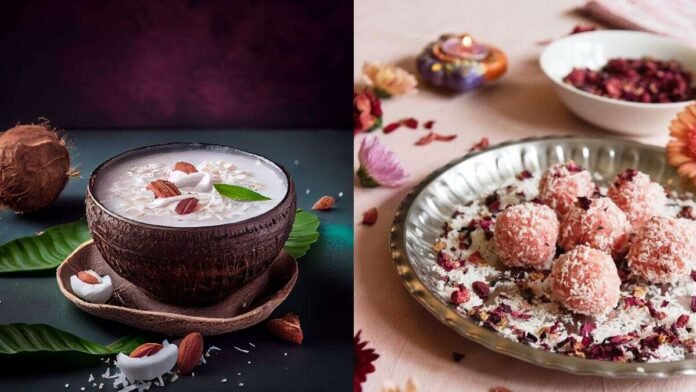Chaitra Navratri, a nine-day Hindu festival dedicated to the worship of Goddess Durga, is celebrated with great fervor across India. As the festival enters its seventh day, devotees prepare special offerings, known as bhog, to offer to the deity. One of the most common ingredients used in these bhog recipes is jaggery, a traditional sweetener made from sugarcane juice or palm sap.
Jaggery holds significant importance in Hindu rituals and is often used in religious ceremonies and offerings. Its natural sweetness and rich flavor make it a preferred choice for preparing prasad during Navratri. On the seventh day of Chaitra Navratri, devotees seek blessings from Goddess Kalratri, the seventh form of Goddess Durga, and offer jaggery-based delicacies as part of their prayers.
To commemorate this auspicious occasion, here are some easy-to-make jaggery prasad recipes that you can prepare at home:
- Jaggery Rice (Gur Chawal): Cooked rice mixed with jaggery syrup and flavored with cardamom and dry fruits makes for a delicious and nutritious prasad dish. This sweet rice delicacy is often offered to the Goddess as a symbol of devotion and gratitude.
- Jaggery Ladoo: Made with roasted gram flour (besan) and melted jaggery, jaggery ladoos are popular sweet treats prepared during Navratri. These bite-sized balls of sweetness are easy to make and are loved by people of all ages.
- Sweet Pongal: A traditional South Indian dish, sweet pongal is prepared using rice, moong dal, jaggery, and flavored with ghee and cardamom. It is a wholesome and satisfying prasad option that is enjoyed by devotees during Navratri.
- Jaggery Coconut Barfi: Combining the goodness of grated coconut, jaggery, and ghee, coconut barfi is a delectable sweet that is often offered to the Goddess during Navratri. It is easy to make and has a rich, melt-in-your-mouth texture.
- Jaggery Kheer: A creamy and indulgent rice pudding made with jaggery, milk, rice, and flavored with aromatic spices like cardamom and saffron. Jaggery kheer is a comforting dessert that is savored by devotees as prasad on special occasions like Chaitra Navratri.
As devotees immerse themselves in the fervor of Chaitra Navratri, the seventh day holds particular significance. It marks the worship of Goddess Kalratri, who is revered for her fierce form and protective blessings. Devotees observe this day with special prayers and rituals, seeking the strength to overcome obstacles and dispel negativity from their lives.
The tradition of offering bhog to the deity during Navratri is deeply rooted in Hindu culture and spirituality. It is believed that offering food to the Goddess symbolizes gratitude and devotion, and in return, devotees receive blessings for their well-being and prosperity. The preparation of prasad is considered a sacred act, infused with love and reverence for the divine.
In addition to jaggery-based prasad recipes, devotees also prepare other traditional delicacies such as puris, sabzis, and kheer to offer to the Goddess. These dishes are prepared with meticulous care and attention to detail, ensuring that they are pure, delicious, and fit for divine consumption.
As families come together to celebrate Chaitra Navratri, the aroma of freshly prepared prasad fills the air, creating an atmosphere of joy and spirituality. Sharing prasad with friends and family members is a cherished tradition, fostering a sense of unity and camaraderie among devotees.
Chaitra Navratri is not just a religious festival but a celebration of faith, devotion, and cultural heritage. Through the preparation and offering of bhog, devotees express their reverence for the divine and seek blessings for a prosperous and fulfilling life. As the seventh day of Navratri unfolds, let us embrace the spirit of devotion and gratitude, and continue to seek the divine blessings of Goddess Kalratri.

